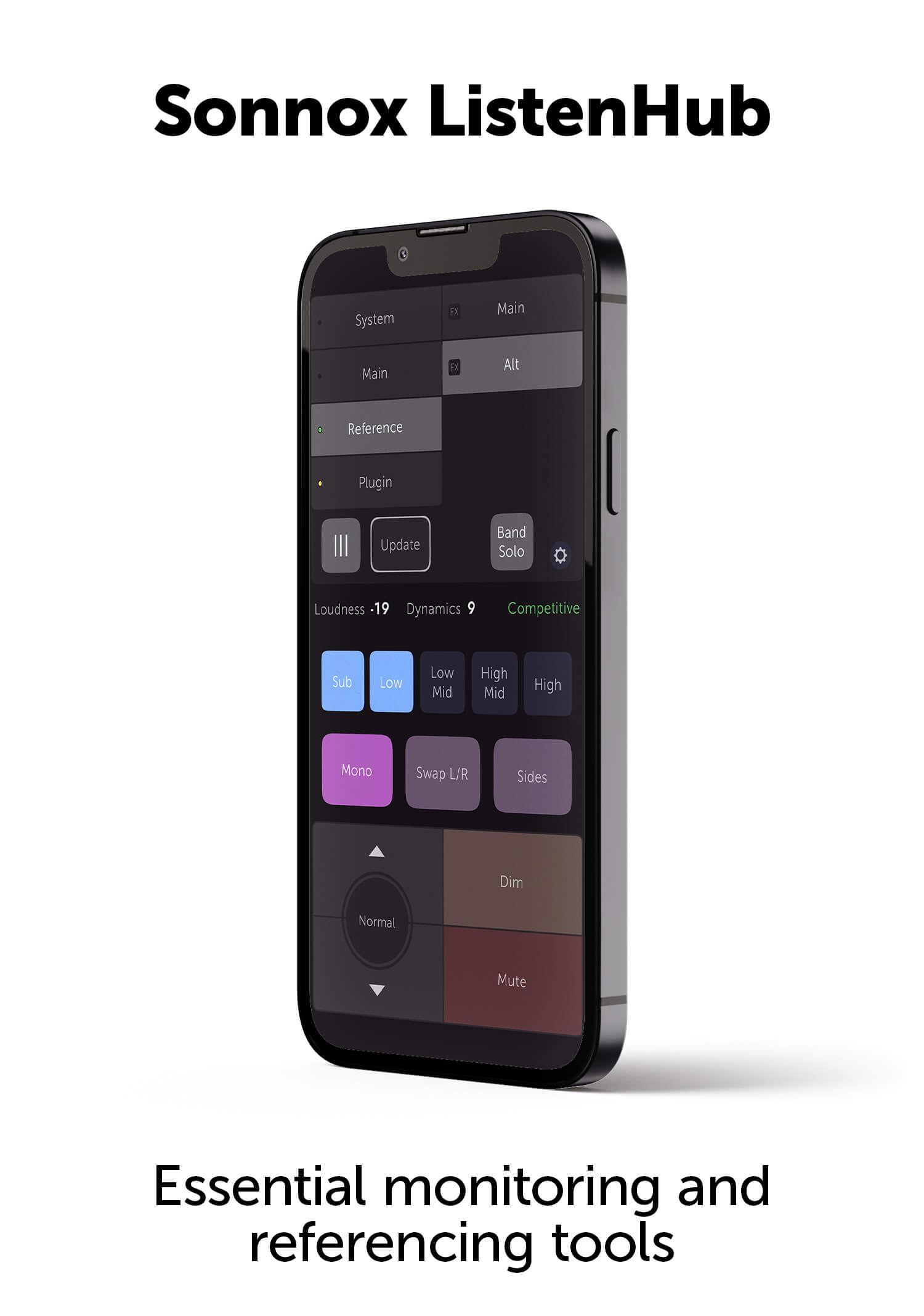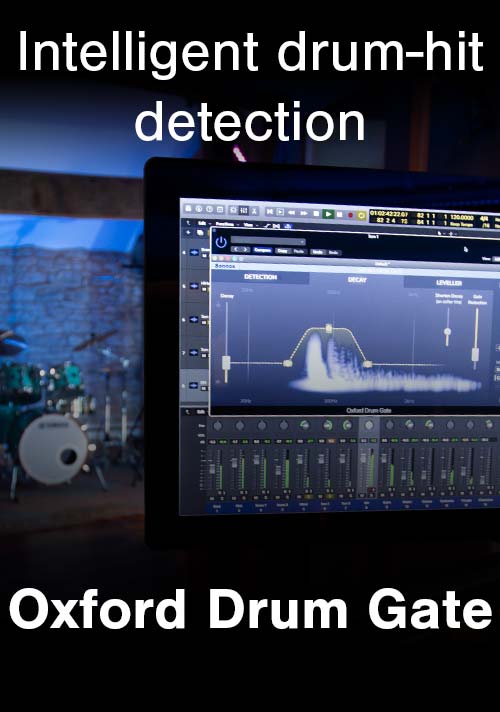Kevin Killen
“It’s like your favorite guitar. You know it makes a beautiful sound, and that's how I feel about Sonnox Plug-Ins – they're tried and true.”
Kevin Killen is an accomplished engineer who has not been afraid to take risks to succeed. He began his career as an assistant engineer in his native Dublin. After working with U2 at the beginning of their long commercial peak, Killen decamped to New York City despite not knowing anyone in the city. Now he operates out of Avatar Studio in Manhattan, one of the top multi-room studios in the world.
Killen's work ethic and willingness to start from the bottom has allowed him to reach the top of his profession. He's also amassed some impressive engineering credits along the way, from David Bowie's swansong Blackstar and Lazarus cast album, to recording U2's Unforgettable Fire in Slane Castle. Whether working with emerging or high profile artists, one thing remains constant in his work; Sonnox Plug-Ins.

Kevin Killen at Avatar Studios. Photo Credit Jen Maler.
When did you first start using Sonnox Plug-Ins?
In 2003, I went to Peter Gabriel's Real World Studios near Bath, England and I was tasked with remixing the album ‘So' in 5.1 Surround Sound. I was involved with that record as an engineer for about ten months back in 1985. It originally was recorded and mixed on an SSL 4000 and Peter had asked that I faithfully reproduce those original mixes in surround before getting into "trickery." I got to use the Sony Oxford RF-3 Console for the first time and I thought it sounded very musical.
I was able to replicate how the original mixes sounded by using the Sonnox EQ with its different curves and compression. I was transitioning from only working on analog consoles and tape machines to a hybrid model where some projects were recorded on tape and others were recorded on Pro Tools or another DAW. By around 2004, most of my mixing work was beginning to dovetail into mixing in the box, but I wasn't satisfied with the way it sounded. To me, it sounded edgy, harsh and unmusical.
Peter asked me to mix an album [Invisible Fields] by Iarla Ó Lionáird for his label, Real World Records. It was a modest budget and therefore needed to be mixed in Pro Tools. He asked if I could find a way to mix in an environment similar to when I worked on the Sony Oxford console. I searched to find a suite of Plug-Ins that Sony made, and I remember a colleague had said that they made Plug-Ins available for Pro Tools.
How well did they work for you?
The music was a hybrid of traditional and modern with frame drums, stringed instruments and electronic keys which presented some challenges. I bought the Sonnox Dynamics and EQUALIZER
Plug-Ins and, apart from a plate setting and some reverbs which were already in the session, I mixed the whole record using only those two Plug-Ins. Peter said it was the best-sounding record he'd heard from his entire label thus far.
There was something about this particular suite of Plug-Ins that appealed to me. I had tried to mix other things in the box, but I never had any success. I always felt before that I was compromising the tone. I was so glad to find dynamics and EQ Plug-Ins that sound musical, intuitive and flexible.
I asked my mastering engineers if the mixes that I was achieving in the box were as consistent as the mixes I'd been getting in the analog world. Within a year they said they were comparable. Eventually, one of my mastering engineers said that he preferred what I was doing in the box over what I had done before. I know that’s subjective, but it was illuminating to hear.
From that day on, I started using Sonnox Plug-Ins a lot. Most of my mixing from 2006 until now has been in the box, and Sonnox EQ and Dynamics have become my go-to Plug-Ins.
What do you try to bring to a mix?
I'm always trying to make my sound as expansive and three-dimensional as possible. I imagine what it would be like to hear this music for the first time and allow myself the feeling of being transported by it. I want to go beyond the physical limitation and actually immerse the listener in the music. I strive to give it extra width, height and depth - from the lowest to the highest frequency, from the front of the speaker to the furthest point you can imagine.
I create a multi-dimensional sound stage. Sometimes it works well with certain albums because the artist and producer are into layering and creating that depth of field. While other artists want their music to be real in your face and dry. Either way, I'm always looking to create a larger palette; some of it derived from the performance and some of it derived from the arrangement and tones.
I'm so comfortable using Sonnox Plug-Ins that I can get a compelling sound very quickly. This gives me time to investigate the nuances of the mix and create those special little moments where you can surprise the listener. You create the illusion that the listener is in this different physical space.
You mention the EQ and Dynamics as being your favourite Sonnox Plug-Ins. How do you use them?
With the EQ I like the fact that you have the four variable curves. You can have anything from an SSL style EQ [type 1] to a NEVE [type 3], GML [type 5 – HDX only] and then a broader mastering-style EQ [type 4] - all within one Plug-In - so that's significantly important to my workflow. I'm a big fan of the Oxford Dynamics because I don't like a lot of heavy compression. I find that, with the Oxford Dynamics, you can get smooth control of a signal but you also have the flexibility in terms of how you can sidechain it or how you use the warmth control. To my ear, it sounds more musical, like analogue gear.
Over the years I've been trying to use fewer Plug-Ins while I'm mixing. I've created a template using Sonnox Plug-Ins for all of my EQ and compression applications. My drums are always bussed down to one stereo group. On that I'll often use the GML EQ into the Inflator (Exciter Plugin) and that gives me all the flexibility I need. Also, each one of my individual channels has very little processing on them. I'm not putting ten compressors across all of the audio paths, which frees up CPU and makes it smoother and more elegant to mix.
My basic template is that I'll have a drum sub-group, a music sub-group, and a vocal sub-group and then I'll combine those three into one final group. Between those four subgroups, there are eight Plug-Ins, maximum. If I need to put something else on the audio path I can, but I can get a great mix with only eight Plug-Ins if everything has been well-recorded. I find this a much more elegant way of mixing.
Can you talk about a particular artist or session where Sonnox Plug-Ins saved the day or came in handy?
The Sonnox EQ, Inflator and the Dynamics are all in my default chain. I might mix it up with a couple of other things, but generally, I start there. It can be a project I've recorded and been a part of from the beginning, or it can be something I've inherited from another engineer. But ultimately I always go with Sonnox Plug-Ins because I know them.
The EQ has five different options, so I can try all of them and see which one is the one that's going to make this particular instrument do what I want it to do.
Naturally I experiment with other software too, but it's funny when your ear is in tune with a particular Plug-In and you know you can get a result from it quickly, you just tend to go there. There are a lot of choices out there in the marketplace, but a lot of it is not that appealing to my ear. I know other people will have a different opinion, but as a user, it is like having your favorite guitar. You know it makes a distinct sound, and you know that it can be a beautiful sound, and that's how I feel about Sonnox Plug-Ins – they're tried and true.
Interview and editorial by Jackie Smiley




